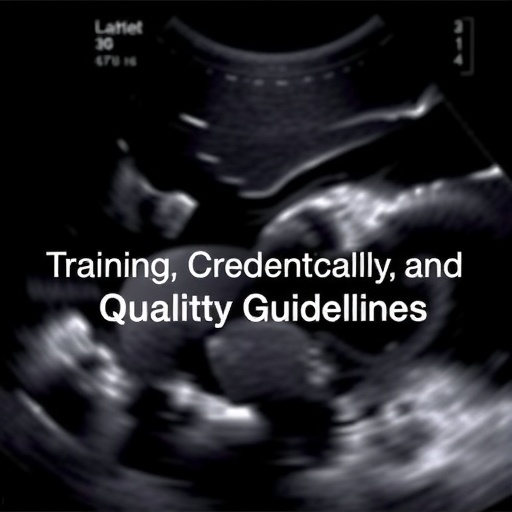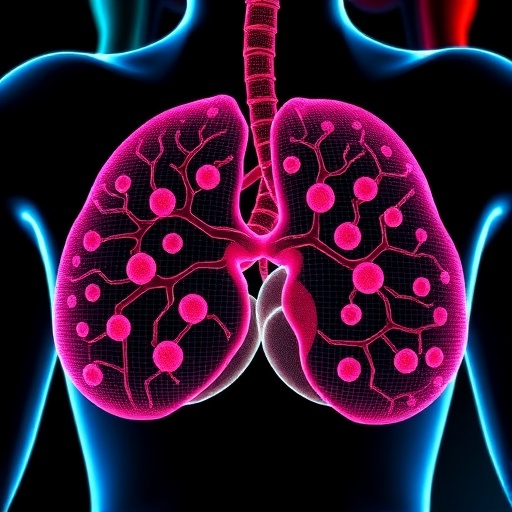
In the evolving landscape of neonatal care, the integration of cutting-edge diagnostic technologies has become indispensable. One such technology, point-of-care ultrasound (POCUS), is rapidly transforming the way clinicians assess and manage critically ill newborns. Recently published guidelines spearheaded by Fraga, Bhombal, Juliano, and colleagues, provide groundbreaking neonatal-specific protocols that redefine training, credentialing, and quality assurance for POCUS in neonatal intensive care units (NICUs). These meticulously crafted recommendations offer clarity and precision, targeted exclusively at the unique requirements of neonatal patients—a crucial distinction from prior joint guidelines encompassing both neonatal and pediatric populations.
POCUS has emerged as a revolutionary tool in NICUs due to its portability, real-time imaging capability, and non-invasive nature. While international standards from bodies like the European Society of Paediatric and Neonatal Intensive Care (ESPNIC) have established foundational principles applicable across neonates and older children, the new guidelines delve deeper. They furnish tailored expertise for neonatologists and allied health professionals, emphasizing the nuances of neonatal anatomy and physiology that influence ultrasound interpretation and intervention. By honed specificity, these directives promise to enhance diagnostic accuracy and therapeutic decision-making in fragile neonates whose clinical presentations often betray subtle, life-threatening pathologies.
Beyond clinical application, the guidelines rigorously address the educational pathway for POCUS proficiency. Training frameworks have been structured to encompass both foundational and advanced competencies, recognizing that neonatal ultrasound demands a higher cognitive and interpretive threshold compared to other patient groups. The curriculum advocates for a blended approach combining didactic sessions, supervised hands-on scanning, and competency assessments aligned with real-world scenarios. This educational paradigm prioritizes consistency and reproducibility, ensuring that skill acquisition is not merely theoretical but translates seamlessly into improved bedside practice.
.adsslot_mkyj1HOl3f{width:728px !important;height:90px !important;}
@media(max-width:1199px){ .adsslot_mkyj1HOl3f{width:468px !important;height:60px !important;}
}
@media(max-width:767px){ .adsslot_mkyj1HOl3f{width:320px !important;height:50px !important;}
}
ADVERTISEMENT
Credentialing and quality assurance form the backbone of these protocols, safeguarding patient safety and maintaining the highest standards of care. The authors advocate for institutional credentialing processes that validate practitioner expertise before independent clinical application. These processes integrate objective measures such as logbook reviews, proficiency testing, and periodic re-evaluations. Quality assurance, meanwhile, is envisioned as a continuous improvement cycle involving audit mechanisms, peer review, and structured feedback loops to identify and rectify deviations from best practices. This emphasis underscores the necessity of robust governance frameworks in the rapidly expanding domain of neonatal POCUS.
Technological advancements also underpin these guidelines. The authors acknowledge the dynamic nature of ultrasound hardware and software innovations, urging neonatal units to adopt devices optimized for the smallest patients. Enhanced image resolution, miniaturized probes, and user-friendly interfaces are highlighted as pivotal factors improving feasibility and accuracy in the NICU setting. Furthermore, the guidelines emphasize the integration of artificial intelligence and image analysis algorithms as promising adjuncts, potentially augmenting diagnostic precision and reducing operator dependence as neonatal POCUS matures.
Complementariness with ESPNIC’s broader pediatric ultrasound recommendations is a recurring theme in the document. The new neonatal-specific guidelines do not supplant existing frameworks but rather build upon them, providing a refined toolset that complements established multinational standards. This strategic alignment facilitates easier adoption across international centers, as institutions already familiar with ESPNIC directives can integrate neonatal refinements without overhauling established protocols. Such synergy encourages a harmonized global approach to POCUS training and utilization, promoting consistency in neonatal critical care worldwide.
The clinical implications of these guidelines extend well beyond technical proficiency. By fostering earlier and more accurate bedside diagnostics, neonatal POCUS can accelerate clinical interventions, reduce reliance on more invasive or time-consuming imaging modalities, and potentially improve neonatal outcomes. Applications ranging from cardiac function assessment to respiratory distress evaluation and vascular access guidance become more standardized and evidence-based, minimizing variability in care delivery. This standardization is especially vital in resource-limited settings, where rapid, reliable imaging may be the difference between life and death.
The guidelines also address workflow integration, a critical yet often overlooked component of bedside ultrasound adoption. Strategies are proposed to harmonize POCUS use with existing NICU protocols, ensuring efficient utilization without disrupting critical care routines. This includes recommendations on documentation practices, image storage, and interdisciplinary communication to foster transparency and facilitate multidisciplinary decision-making. Such comprehensive incorporation enhances not only diagnostic capabilities but also the collaborative culture within neonatal units.
Importantly, the document positions neonatal POCUS within a broader ethical and medico-legal context. With ultrasound use expanding rapidly, concerns about operator competence, patient consent, and data privacy arise. The authors advocate for clear institutional policies that balance the benefits of immediate diagnostic insights with responsible patient care principles. This includes transparency in communicating the limitations of POCUS, fostering informed consent when appropriate, and maintaining strict confidentiality protocols for digital image handling. Such measures are essential as neonatal ultrasound inches closer to becoming a ubiquitous clinical tool.
The authors also foresee ongoing challenges and future directions in neonatal POCUS. These include addressing disparities in access to ultrasound technology and training, especially in low-income countries where neonatal mortality remains high. They call for international collaboration to democratize education and resources, fostering equitable improvements in neonatal care globally. The guidelines serve as a foundation for future research endeavors focused on validating and expanding POCUS applications tailored to diverse neonatal populations.
In conclusion, these pioneering guidelines reflect a concerted effort to tailor point-of-care ultrasound specifically to the neonatal patient—a group uniquely susceptible to rapid clinical fluctuations and diagnostic complexities. By providing a comprehensive framework for training, credentialing, and quality assurance, the authors set a new benchmark for neonatal critical care. Their work not only enhances the diagnostic arsenal available to frontline caregivers but also charts an actionable path for integrating sophisticated imaging within the delicate fabric of neonatal medicine.
As neonatal POCUS continues to evolve, these guidelines will undoubtedly shape training programs and clinical standards, driving a paradigm shift in neonatal intensive care. They reaffirm the vital role of ultrasound as both a technological marvel and a clinical compass, guiding practitioners through the intricate landscapes of neonatal pathophysiology with unprecedented clarity and confidence. The future of neonatal critical care, illuminated by these ultrasound protocols, shines brighter than ever.
Subject of Research: Neonatal point-of-care ultrasound (POCUS) guidance focusing on training, credentialing, and quality assurance specifically tailored for neonatal intensive care units.
Article Title: Neonatal point-of-care ultrasound—guidelines for training, credentialing and quality assurance.
Article References:
Fraga, M.V., Bhombal, S., Juliano, C. et al. Neonatal point-of-care ultrasound—guidelines for training, credentialing and quality assurance. J Perinatol (2025). https://doi.org/10.1038/s41372-025-02367-1
Image Credits: AI Generated
DOI: https://doi.org/10.1038/s41372-025-02367-1
Tags: best practices for ultrasound in critical carecredentialing for neonatal ultrasoundeducational pathways for POCUS trainingenhancing diagnostic accuracy in neonatesneonatal anatomy and physiology in ultrasoundneonatal intensive care unit protocolsneonatal ultrasound training programsnon-invasive diagnostic tools for infantspoint-of-care ultrasound in NICUsquality assurance in neonatal carereal-time imaging in newborn careultrasound guidelines for neonatologists





